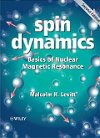
01-01-2003, 05:34 PM
|
|
Junior Member
|
|
Join Date: Jan 2003
Posts: 1
Level up: 3%, 48 Points needed |
Downloads: 0
Uploads: 0
Provided Answers: 1
|
|
 Where do ketones and carboxylic acids show up on a proton NMR?
Where do ketones and carboxylic acids show up on a proton NMR?
Ketones in general don't have to show up on a proton NMR since ketone is defined as R-CO-R', no protons necessary. But in practice, there's usually the alpha proton on the next carbon: RR'CH-CO-R", and that proton shows up about 2 - 2.5 ppm (2.1 ppm for acetone, 2.4 ppm diethylketone, 2.6 ppm acetophenone).With carboxylic acids, you have the acidic hydrogen in the -COOH group which shows up way on the left, 10-15 ppm, and is often exchanged with the solvent (so it may be a very wide low signal, or disappear completely if your solvent is/contains D2O)Notice also that a typical carboxylic acid has the alpha-carbon, RR'CH-CO(OH) which has a hydrogen, and is attached to -CO- just like a ketone. That hydrogen also shows up in 2 - 2.5 ppm region (2.1 for acetic acid, 2.3 for valeric acid, etc)
Content provided by Yahoo Answers.

1 out of 1 members found this post helpful.
Did you find this post helpful?
 |

|



